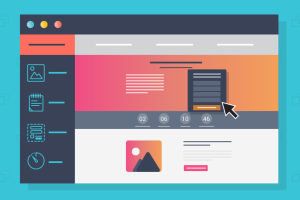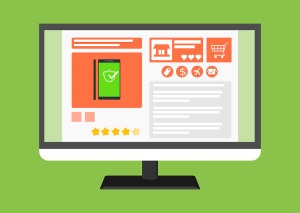Ecommerce Website Development: Everything You Need to Know
E-commerce website development involves the technical aspects of a website, including functionality, payment acceptance, user response, and aesthetics. The web development services industry, valued at $11 billion in 2022, allows business owners to launch user-friendly websites and solve their e-commerce challenges. This includes determining the right features and functionality, understanding the best e-commerce framework, and integrating e-commerce into a current website or template. This article discusses e-commerce web development, finding a developer, and the steps to take before launch.

Choices for Developing an E-Commerce Website
Three options are likely to be available when it comes to developing your e-commerce store.
- Build your website from scratch (aka open source).
- Customize a SaaS (software-as-a-service) solution.
- Harness the power of MACH architecture.
Build your website from scratch

If you have an existing IT or web development staff, then using open-source software can be your best option. With open-source e-commerce systems, you have complete control over the code, allowing you to create a website from the ground up with minimal to no restrictions on customization. Bear in mind that when you use an open-source solution, your company will frequently be in charge of things like web hosting, security vulnerabilities, PCI compliance, and manual patching and upgrades. Because of this, open-source may seem excessively complicated, costly, and tech-heavy to certain firms, especially as their company expands and develops more complexly.
Customize a SaaS solution.
Lack the funds or coding knowledge to create a solution from the ground up?
Bring on SaaS e-commerce.

SaaS is subscription-based software that can be hosted in the cloud and developed by an outside source. It allows companies to rent the platform, with the provider handling associated costs like hosting, PCI compliance, security, and product updates. This allows companies to quickly and economically go to market. Some e-commerce solutions, like BigCommerce, combine the benefits of open-source software and SaaS, known as “open SaaS.” BigCommerce is one of the best open-source SaaS e-commerce platforms for mid-market and enterprise businesses, offering features like reduced ownership costs, quicker time to market, and hosting. Retailers can also create custom integrations and features more rapidly, similar to open-source platforms.
MACH (Microservices, API-First, Cloud-Native and Headless).

For decades, conventional e-commerce architecture has integrated frontend storefront and backend server-side into a single monolithic configuration. This is beneficial for small and mid-sized firms with modest needs, but can pose problems when companies grow and require more complexity, such as multiple websites or branching out.
MACH STRUCTURE
MACH (microservices, cloud-native SaaS, API-first, and headless) is a set of best-of-breed building guidelines for corporate software tech stacks. With MACH, as opposed to monolithic architecture, you can select the technology that best suits your future roadmap and business requirements.
Microservices
Microservices are tiny applications that are assembled to accomplish a single, highly specialized activity. They are independently developed, updated, deployed, and managed, and each uses a different code.
API-first
Apps must be created with application programming interfaces (APIs) at their core, as they enable connections and communication between two or more services or apps to deliver content.

Cloud-native
Utilizing all of the cloud’s and SaaS technology’s capabilities, a cloud-native application manages, monitors, and maintains the technology while licensing it through subscription services.
Headless
The separation of a website’s frontend display layer from its backend e-commerce functions is known as headless commerce architecture. This makes it possible to integrate several channels and create a user interface with more design flexibility.
How Do I Choose the Right E-commerce Website Developer?

An e-commerce developer’s expertise is crucial for improving the customer experience on an online platform. A PWC study found that 73% of American customers consider a brand’s customer experience crucial, but only 49% believe companies offer a positive experience. Hiring an experienced e-commerce web development company can ensure a better user experience and increase conversion rates. Understanding different developers’ strengths is essential when assessing a developer for your online business. Some developers excel in backend customization and technical execution, while others excel in frontend design. It is essential to consider factors such as PCI compliance, web security, SEO, multiple payment options and gateways, CMS integration, mobile responsiveness, shopping cart design, and product filtering when developing an e-commerce website. When choosing a developer, it is essential to have a clear understanding of your desired features and functionalities. For example, a backend developer may be more important than a designer for an open-source framework. If using a SaaS platform, you may need more frontend work, but also someone with experience developing APIs. It is recommended to leave extra complexity to professionals, even if the platform offers a large selection of apps with pre-built connectors.
The Final Word

Starting an e-commerce business can be challenging, but it’s essential to understand the role of a web developer, the features to consider when assessing tech requirements, and the preparations needed before launching. BigCommerce offers a strong network of service and solution experts to assist with any queries, ensuring a smooth transition to a sophisticated platform. Understanding the purpose of a web developer in your e-commerce launch and maintenance process is crucial.




No comment